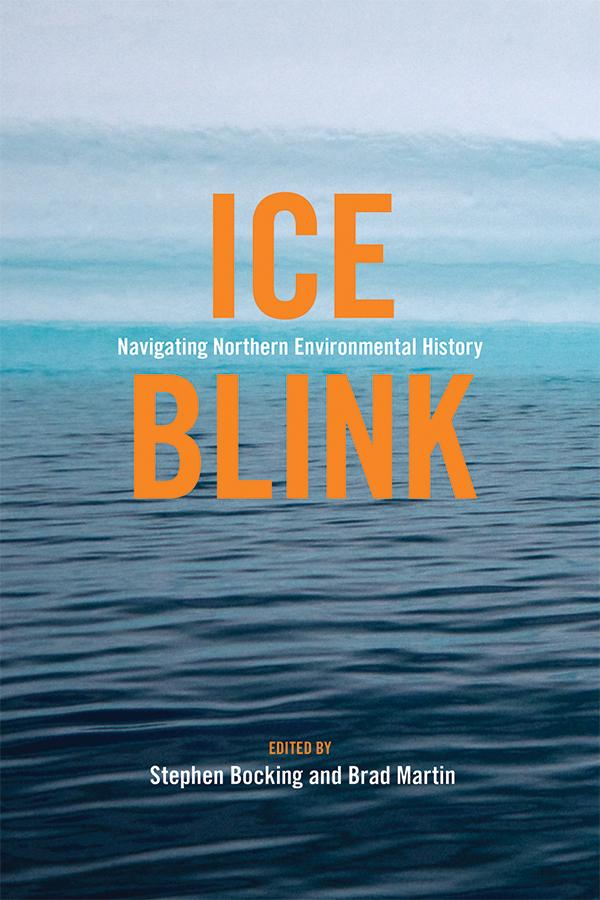
Ice Blink: Navigating Northern Environmental History. Cover.
Ice Blink: Navigating Northern Environmental History. Cover.
© 2017 University of Calgary Press
 This work is licensed under a Creative Commons Attribution-NonCommercial-NoDerivatives 4.0 International License.
This work is licensed under a Creative Commons Attribution-NonCommercial-NoDerivatives 4.0 International License.
Bocking, Stephen, and Brad Martin, eds. Ice Blink: Navigating Northern Environmental History. Calgary: University of Calgary Press, 2017.
Northern Canada’s distinctive landscapes, its complex social relations and the contested place of the North in contemporary political, military, scientific and economic affairs have fueled recent scholarly discussion. At the same time, both the media and the wider public have shown increasing interest in the region. This timely volume extends our understanding of the environmental history of northern Canada—clarifying both its practice and promise, and providing critical perspectives on current public debates.
Ice Blink provides opportunities to consider critical issues in other disciplines and geographic contexts. Contributors also examine whether distinctive approaches to environmental history are required when studying the Canadian North, and consider a range of broader questions. What, if anything, sets the study of environmental history in particular regions apart from its study elsewhere? Do environmental historians require regionally-specific research practices? How can the study of environmental history take into consideration the relations between Indigenous peoples, the environment, and the state? How can the history of regions be placed most effectively within transnational and circumpolar contexts? How relevant are historical approaches to contemporary environmental issues?
Scholars from universities in Canada, the United States and Britain contribute to this examination of the relevance of historical study for contemporary arctic and sub-arctic issues, especially environmental challenges, security and sovereignty, indigenous politics and the place of science in northern affairs. By asking such questions, the volume offers lessons about the general practice of environmental history and engages an international body of scholarship that addresses the value of regional and interdisciplinary approaches. Crucially, however, it makes a distinctive contribution to the field of Canadian environmental history by identifying new areas of research and exploring how international scholarly developments might play out in the Canadian context. (Source: University of Calgary Press)
The Canadian History and Environment series explores topical issues in Canadian history as seen through an environmental lens, and is published in partnership with the Network in Canadian History & Environment/Nouvelle initiative canadienne en histoire de l’environnement (NiCHE).

